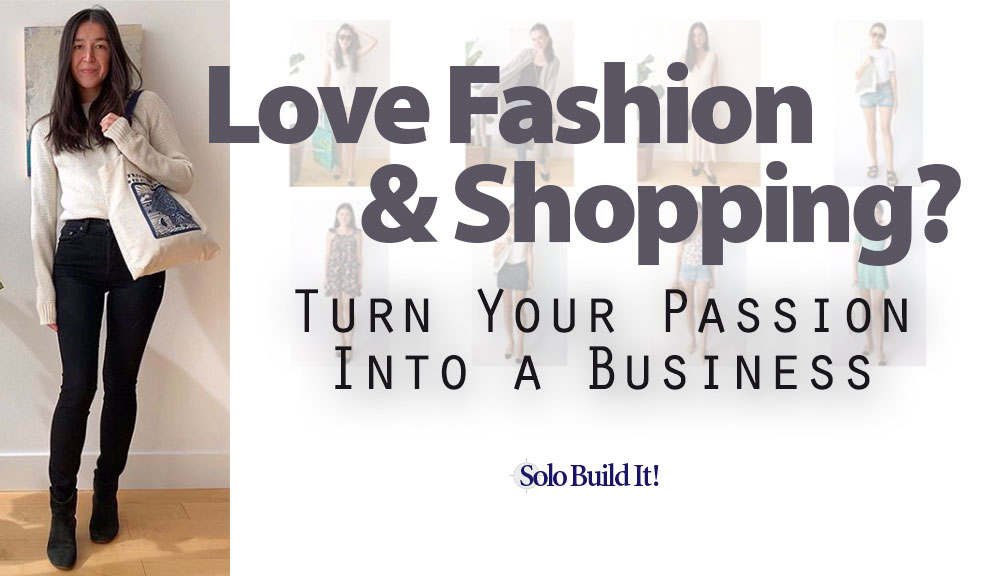
A good review is really about answering every single question someone who is about to purchase would have… and doing that honestly so it doesn’t become a fake review.Yuki Evoy from www.newinspired.com
Here’s a question: how can you turn shopping into an activity that earns you money instead of spending it?
Well, you could, for example, buy used things and sell them for a profit. That’s a great business model, especially if you are dealing with collector’s items.
Or you could review items you buy, providing sought-after information for people in your niche market.
That’s what Yuki Evoy is doing. She’s always been passionate about fashion and personal style, so her reviews are, naturally, about fashion items.
Her reasons for starting NewInspired.com are somewhat different from most other solopreneurs we’ve spoken to. Although she never intended to “start her own thing,” she’s now the owner of a steadily growing business that gives her life purpose.
Before we dive into the interview with Yuki, I wanted to share an infographic published by Chase.ca with you. It illustrates why now is a great time for Canadian women to start a small business.
Why is this relevant? Well, for starters, Yuki is a Canadian woman who started a small business. Besides, I really like the conclusion on the infographic:
“When women rise, we all rise.”
And now, back to Yuki and what we can learn from her about starting a business online.
1. Yuki, on NewInspired.com you help fashion-minded visitors pick stylish summer outfits and give tips for smart online shopping. How did you know this was the right topic for you and had great business potential?
 I graduated from the Fashion Institute of Technology with a Bachelor of Science in Advertising & Marketing Communications (and a minor in History of Art).
I graduated from the Fashion Institute of Technology with a Bachelor of Science in Advertising & Marketing Communications (and a minor in History of Art).
Fashion and personal style have always been things that I’ve been intensely interested in.
After New York and a stint in Toronto, I moved “home” to my parents in Panama/Anguilla and all of a sudden I was ordering all of my clothes online exclusively… and working with my dad.
Since I joined the SiteSell team, I wanted to know the product first hand. So I started working my way through Solo Build It! for WordPress.
I used summer style and shopping online as my “tester” concept. The Brainstorm It! keywords for “summer fashion” supported the idea as well. Online shopping has been on the rise since 2016; coupled with my own need for reviews, it seemed like a great idea.
It started as a way to simply get familiar with the SBI! for WP Action Guide and tools. I wasn’t looking to start my own thing. But it has proved its potential with growing traffic and affiliate commissions ever since I started writing more in spring 2018.
So her reasons for starting NewInspired.com were different, too. She mainly wanted to gain first hand experience of Solo Build It! for WP.
The principles and process she applied to building her site were the same, though. She chose a topic she’s passionate about and where she has in-depth knowledge. She used SBI!’s keyword research tool to prove that her topic had enough demand and business potential.
The result? Although she didn’t intend to “start her own thing,” her site slowly but surely developed into an income-generating online business.
On the other hand, you most likely would want to start your site with the goal of earning money with it. Correct? Then prove your idea can be a winner before you begin. See how SBI! helps you do this in the video below.
2. A big part of your content is fashion reviews. How do you pick the items to review? What distinguishes a good from a bad review?
I keep a spreadsheet of “buzzy fashion brands” that I’ve read about on different blogs.
If the brand doesn’t feel like “me,” I won’t review it. If I find things that I’m into, I’ll review it.
First and foremost, I purchase every item on NewInspired myself. This way it isn’t a paid review and I can be as honest as I like… but it also means that my budget is limited. Which is a plus for my readers, because then I can share how to get a $595 dress for $160. I budget like a madwoman and try to get my pieces for the best price possible.
There are a lot of pains in shopping online, so I cover everything a reader would want to know. Sometimes I get a direct message on Instagram asking for more details. That feedback helps me to go back and make the review even better.
In the reviews on NewInspired, I like to cover:
- how the garment fits
- the material a garment is made out of (e.g., natural fibres last longer and make a garment higher quality)
- return or exchange process (e.g., some brands have you pay for shipping AND return shipping, which means sometimes you “pay” $60 just to “try on” a dress from France)
- and how well the garment holds up over time.
There have been a few times where I have received a garment and have just been like “ugh, this is so off.” In that case I have to ask myself, “is it off because it just doesn’t flatter me or isn’t my taste, or is it off because of a technical problem?”
If it’s the former, I’ll return it and won’t review it. Everyone’s tastes are different and just because something didn’t look good on me or wasn’t my taste, doesn’t mean I should negatively review it.
If it’s the latter, I’ll review it, but state my opinion of how it could be improved/why the garment didn’t work.
There was one skirt that totally wasn’t flattering on me, but I still reviewed it because readers had been asking about it. I ultimately returned it, but wrote about the brand’s return process, which was also useful for my readers.
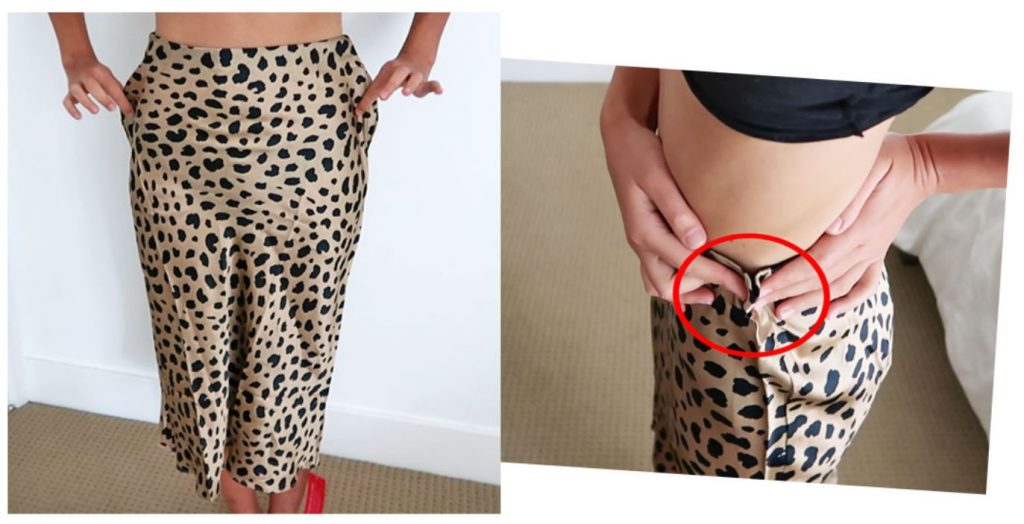
I remember only one instance of a garment that totally didn’t work, from a technical wearability point of view.
So I’d say, write as much as you can about the item. Think about every single detail you’d like to know if you were reading the review.
Cath Andrews’s article on how to review a product helped a lot. I copied and pasted a few bullet points from that series as a reminder to keep the quality and integrity of the reviews high.
And of course, I make it very clear that I collect affiliate income from some retailers. Although it’s a common way that successful bloggers earn income, it’s important to disclose affiliate relationships to your readers.
She enhances her reviews with a bunch of photos, showing herself wearing the garment from different angles. She sprinkles in animated Gifs or – more recently – short video clips to boost the visual impact further and/or demonstrate a specific feature of the reviewed item (see an example below).
The reader also gets recommendations for similar items and a PROS/CONS section at the end of the review.
In an era where fake reviews abound, Yuki’s fashion reviews show a refreshing example for how to write reviews the right way!
Yuki uses short video clips or GIFs to show the garments or shoes she reviews “in action,” so to speak.
3. You use Twitter, Instagram, Pinterest and YouTube (but not Facebook) to promote your content. Why did you choose these social channels? Which one has the most potential in your niche, from your experience?
Pinterest was the first social medium that I felt was the perfect fit for NewInspired, mainly because I could put pictures of celebrities and style bloggers that I found inspiring in one place.
I’ve had a few headaches with my Pinterest account being suspended and then completely taken down due to DMCA copyright claims — because I pin a lot of celebrity paparazzi photos.
After consulting with the SiteSell team who wrote the Solo Build It! Pinterest Action Guide and a lot of waiting and back & forth emails with Pinterest staff, my account got reinstated.
Twitter was next, but to be fair, I don’t do a lot with it. Initially I thought it’d be great for announcing that whatever brand is having a sale and linking to my reviews, but I think I found a stronger audience on Instagram.
Instagram has the most potential for the least amount of time. I’d be tempted to say that YouTube has the most potential, but unfortunately I have so much on my plate right now (working on the — spoiler alert for SBIers — YouTube Action Guide 😉) that I don’t have time to create my own videos anymore.
With Instagram, I like to do #OOTD posts, which means “outfit of the day.” Instagram makes it super easy to tag brands in your photos, so fans of the brand can see how you wore an item… and maybe even follow you on Instagram.
I also like Instagram a lot for embedding in my reviews. For example, I’ve now begun to add a section to my reviews to showcase how I wore an item. I write “as seen on my Instagram,” with a link to my Instagram, then embed the posts from my Instagram to show how I wore it (see the screenshot below).
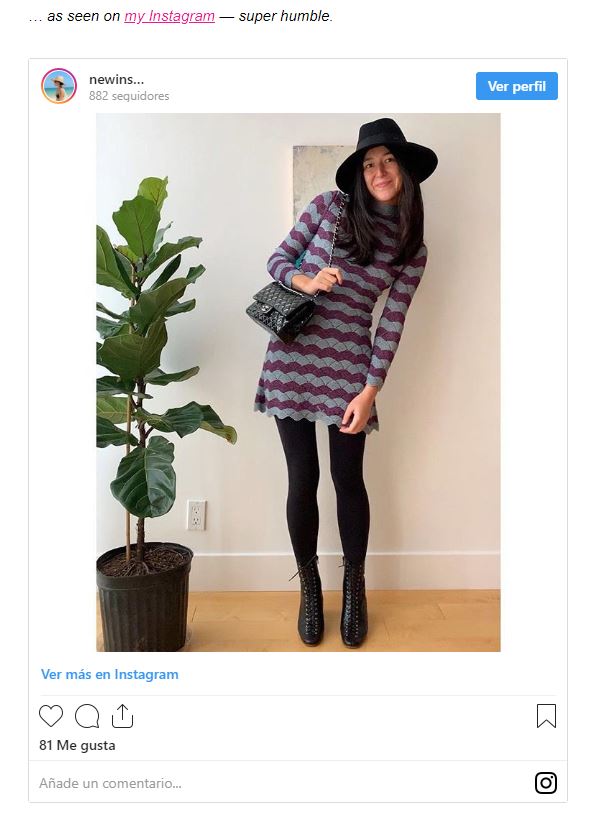
As a general rule, visual topics like fashion, food and travel tend to do best on Pinterest and Instagram. If you’re undecided between these two, check out our article “Surprising Differences Between Pinterest and Instagram.”
“How to” niches, i.e., topics where you can show people how to do things, are ideal for YouTube. Niches like crafts, cooking, sewing, computer repair and all kinds of DIY stuff do really well on YouTube.
Twitter and Facebook are more generic, and can work well for a wide variety of niches.
As an SBI! or SBI! for WP member, you’ll dig deep into your ideal customer profile (aka persona) during DAY 4 of the Action Guide. Part of this research is to identify the best social media platforms. Our advice is to focus on two to three platforms. It’s better to have an excellent presence on a couple of channels than a mediocre one on all of them.
To help you grow an excellent presence, Solo Build It! provides platform specific Action Guides, like the Pinterest and Twitter Action Guides, and the upcoming YouTube Action Guide that Yuki mentioned.
4. You aren’t selling any products on NewInspired.com. There are also no ads. How do you monetize?
I’ve been deliberating displaying ads on NewInspired, but ultimately, I feel like they’d be distracting for my readers.
Showing affiliate products for the dress, skirt or shoes that they’re visiting for would be way more useful for them. My readers are there looking for information for a product. I describe what it was like and then point them in a direction to purchase it.
Right now, I use ShopStyle Collective, which is an amazing affiliate network for fashion blogs in particular.
They have these handy product carousels that you can create in their system and put the HTML in your post. It’s quite visual and in my opinion super useful for visitors.
Readers can see the different colours that the product is available in, the price, and the retailer that’s selling it.
The commissions vary depending on the item and retailer.
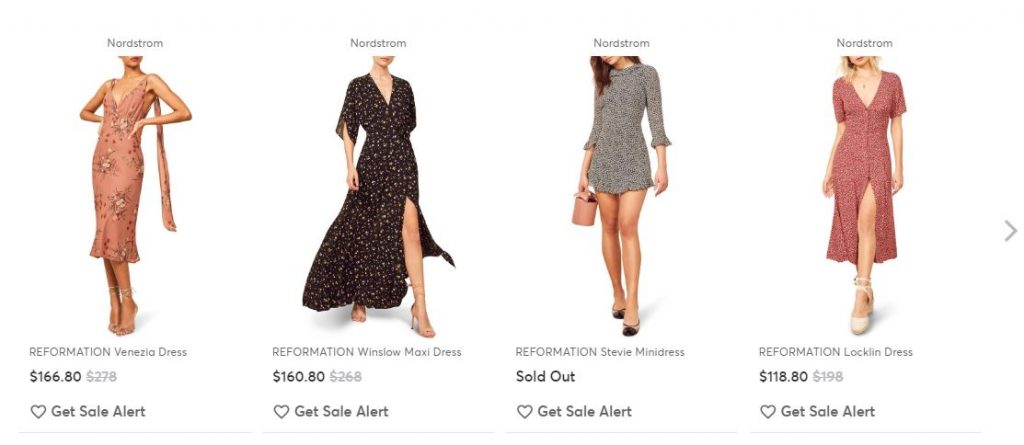
I mean how she puts her readers first when it comes to monetization. The same way she approaches her reviews. She looks at her content with the eyes of her reader. What’s more useful for her reader? Distracting ads or links to stores where she can order the piece of clothing or pair of shoes she just read about?
Sure, her site would earn her more money if she had both ads and affiliate links on her pages. But Yuki chose to put her visitors’ interests first, which — in the long term — will help her grow her business because her audience likes and trusts her.
5. How long did it take to start earning income from your online business? Is it a full-time or a part-time income?
I started my blog around December 2015, but then it just kind of sat there. When your dad is your boss, you don’t get a lot of free time!
From December 2015 until spring 2018, I was putting out one or two pages a month max.
Then in spring 2018, I noticed that I was starting to get more visitors and was like “ok, I need to find more time to put out more content.”
So, weekends and evenings have become “newinspired time,” and I’ve been pushing out way more content.
I only started monetizing in March 2018. At the time it was cost per click (CPC), which meant I’d get 3-5 cents each time someone clicked my affiliate links. While it was slow earning, I was fine with that. It was still money I wouldn’t have had.
It took me from March to September to earn $100.
But it all changed when Shopstyle introduced cost per action (CPA) in October 2018. This meant I’d get a share of the sale when someone ordered.
At the moment my CPA affiliate cheques range from $165 to $950 USD, depending on the month. The average is $300 USD/month.
It’s clearly not (yet) a full-time income, but it does significantly help subsidize the pieces I purchase to either style outfits with or review on NewInspired.
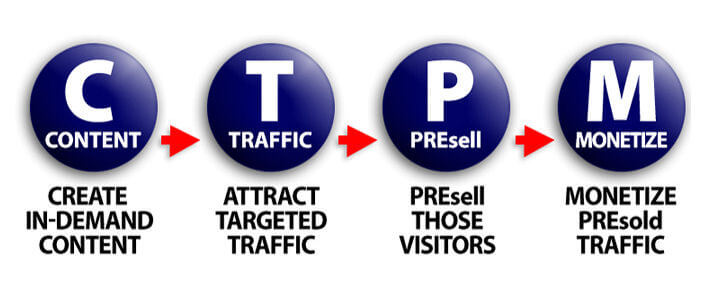
Your Content (website pages, Facebook updates, newsletters, Tweets, Pinterest image and board descriptions, podcasts, videos, and more) creates the overall Web presence.
This content attracts free targeted Traffic through a variety of sources (such as search engines, social media, etc.) from a variety of devices (desktop and laptop computers, tablets, and smartphones).
These visitors become warmed up and PREsold about your business. In other words, they enjoy your high quality content and begin to like and trust you.
In the last step, you generate income through a diversified range of Monetization models (buying products or services, paying for a membership subscription, clicking on AdSense ads, clicking on affiliate links, generating finder’s fees, and more).
The more time you have to create high value content, especially in the beginning, the faster your traffic and consequently your income will grow.
6. You are using WordPress as your site builder. What were your main reasons to use SBI! for WP rather than the original Solo Build It!?
I used WordPress before when I was helping my sister with news.ai, her Anguilla news site.
Of course “helping my sister” with a blog and starting my own business are two different things.
But the “magic” of SBI! is in the secret sauce (i.e., the Action Guide and Brainstorm It!), and if the Action Guide and Brainstorm It! are the same, why not just do it in a content management system that I’m comfortable with?
When NewInspired got hacked last year, my traffic plummeted. At that time I majorly regretted not having my site with Solo Build It!, which is far more secure than WordPress. The entire SBI! platform has never been hacked.
I actually asked my dad, “wouldn’t it be great if there was one place that took care of all the technical things so you wouldn’t have to?” 😊
There wasn’t a lot that I could do except ask Solo Build It!’s WordPress guru for help. Within two days my traffic was back to normal.
Solo Build It!’s support and technical teams are like none other… whether you use the “original” SBI! or SBI! for WP.
What tool you use as your site builder doesn’t really matter. All providers, from Squarespace to Wix to WordPress, have user-friendly drag-and-drop builders. It’s the rest that matters. To build a sustainable online business, you need much more than just a site.
You need…
- the training and education that guides you through the process, step-by-step
- access to a helpful community of like-minded solopreneurs, and
- first class technical support.
All of this is included with both Solo Build It! and Solo Build It! for WP. If you’d like to know more about both products, and which one would be best for you, please talk to our friendly Advisors.

7. What has been your biggest challenge so far as a solopreneur?
Time.
It’s tough to squeeze in, but I figure that I’ll inevitably waste an hour total scrolling on Instagram or Facebook during the work day (sorry Dad!), so why not not do that during the work day and instead spend that hour at night working on my business?
My evenings, weekends and weekend evenings are now solely for working on my business. This means taking photos, editing content that I sketched out during the weeknights, and taking a deep dive into my Google Analytics to try to analyze where I can do better.
It’s a lot of work to cram into two days, but I love it. You don’t know how true that cliché saying, “if you love what you do, it doesn’t feel like work” is until you, well, love what you do.
You need to be super disciplined. And you probably have to cut down on other favorite pastimes, whether that’s watching Netflix shows or scrolling through your Facebook or Instagram feeds. 😉
But, as Yuki says, when you love your topic, it won’t feel like working.

8. What do you enjoy most about being an online business owner? How has it impacted your life?
Purpose.
Don’t get me wrong, I love my job at SiteSell. I handle our social media and love interacting with SBIers, finding unique angles of their stories to share, and sharing their businesses’ social posts.
But sometimes you need something that you really are sincerely passionate about, that, well, gives you purpose.
For me, talking about clothes with like-minded folks on the Internet is it.
But finding purpose in what you do is certainly as important as having the freedom to work when, where and on what you want.
It’s also a great way to discover your potential niche (if you struggle to find one). Ask yourself, “what gives my life purpose?” List everything that comes to mind. I guarantee there will be at least one promising business idea in there!
9. And finally… What’s your top tip for someone who is just starting a solopreneur business?
Put out quality content consistently.
If I had been a little more consistent in publishing quality content from 2016 to 2018, I imagine that my audience would be a lot bigger by now.
Even if you feel like you have “no time,” if you really love what you’re doing, you can find an hour each day and it won’t feel like you’re making any sacrifices.
Let’s Recap. Here are 7 Key Takeaways for Solopreneurs from Yuki’s interview:
- Prove your idea can be a winner before you invest time and money in starting an online business.
- When you write a product review, answer every conceivable question your reader might have. Put yourself in her shoes: what would you want to know if you were your own reader?
- When choosing the best social media platform(s) for your topic, follow your audience. In other words, select the channel that your “ideal customer” prefers.
- Plan your monetization strategies with your readers in mind. What’s most useful for them? Even if that reduces your earnings in the beginning, it will make your business more profitable in the long run.
- Growing a business takes much more than putting up a site. That’s why the actual site builder doesn’t matter much. What matters is all the rest: the training and education, the proven process, the community and support.
- Struggling to come up with potential business ideas? Ask yourself, “what gives my life purpose?” List everything that comes to mind.
- Once you start your online business, commit to finding one hour each day to work on it. You’ll be surprised how far ahead you’ll be in one year’s time.

Latest posts by Margit Streifeneder (see all)
- From Zero to 1 Million Fans: A Community-Driven Success Story - October 16, 2025
- Six Figures on Her Terms: A Lifestyle Business Success Story - September 25, 2025
- From Sheds to Sales: A 20-Year Digital Product Success Story - September 11, 2025



